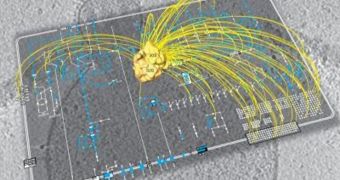Ever since Charles Darwin evolution model managed to impose itself through logic and reason as the main approach to explaining our origins and history, experts have been trying to figure out what the root of life is. In other words, they are trying to understand how the primeval cell, the first life form, may have looked like. This is not as easy as it seems. Most single-cell microorganisms today feature components that evolved over billions of years, and so it stand to reason that their ancestors did not have them, but grew or assimilated them. Now, a newly-released model of the minimal cell, this precursor, is proving to be a lot more complicated than first anticipated, ScienceDaily reports.
The new model was created by a consortium of experts, based at the European Molecular Biology Laboratory (EMBL), in Heidelberg, Germany, and the Centre de Regulacio Genomica (CRG), in Barcelona, Spain. The group has been fascinated with questions about early life for quite some time and decided to investigate the matter in more depth. They did so through three scientific papers, which they published one after the other in the latest issue of the top journal Science. Their research was based on Mycoplasma pneumoniae, the bacteria that causes atypical pneumonia.
The new line of work has already revealed a number of new things about the biology of the simple microorganisms that are bacteria, and proved that even the most seemingly simple cell is in fact much more complex than anyone would have thought. M. pneumoniae was selected as the main subject of the new investigation because it is a very small, single-cell bacteria and because it's one of the smaller prokaryotes out there today. These organisms are called that because they lack a cellular nucleus and also do not rely on other organisms' abilities in order to reproduce.
A large surprise that experts in the group had was discovering that a large number of cells inside the organism were in fact multi-functional. They also found enzymes that were involved in catalyzing a large number of completely-different reactions, which means that they had not evolved a high degree of specialization. “At all […] levels, we found M. pneumoniae was more complex than we expected,” concludes EMBL expert Luis Serrano, who co-initiated the project. He is now based at the CRG Systems Biology Department.

 14 DAY TRIAL //
14 DAY TRIAL //